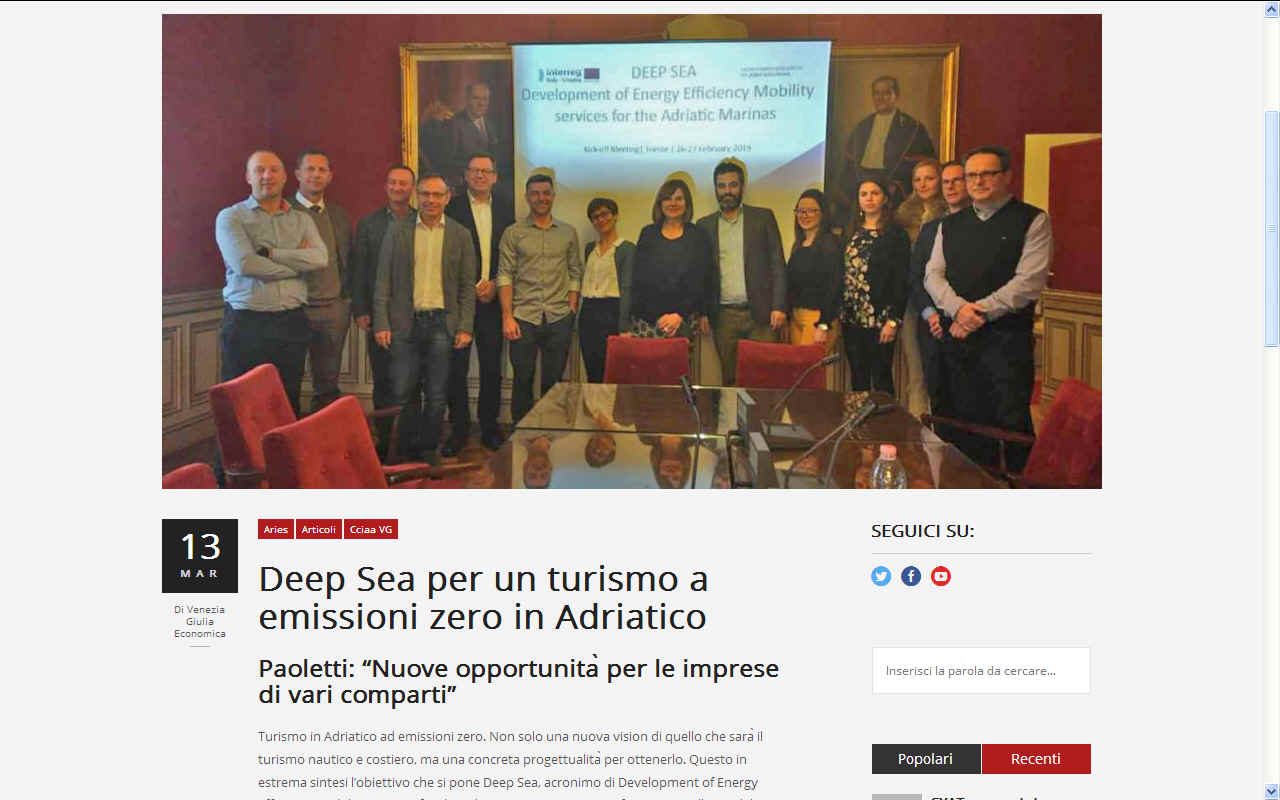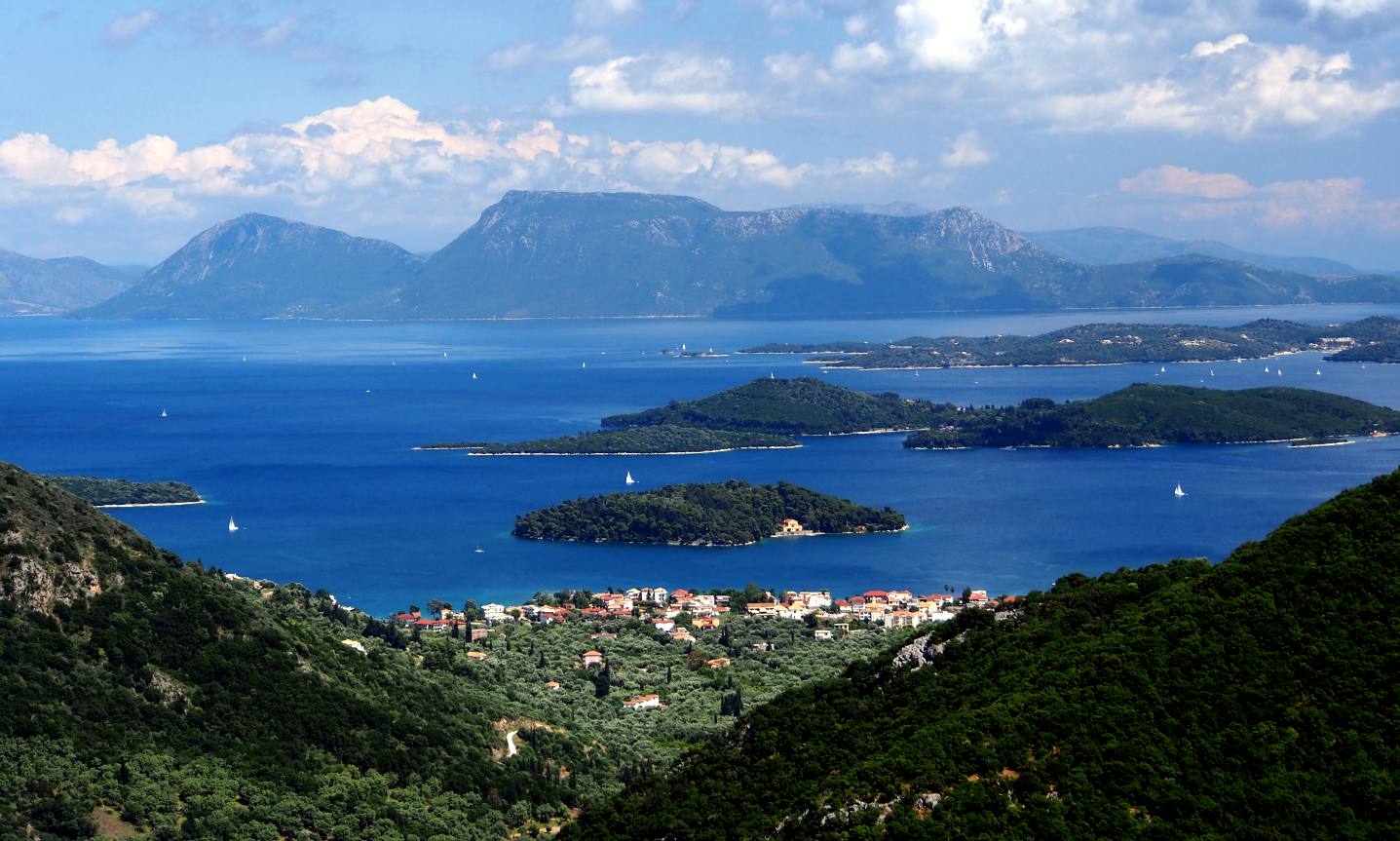|
THE
AMBRACIAN GULF OF ARTA
ABOUT - CLIMATE - COASTAL TOURISM
- HOME - OCEANS
PLEASE
USE OUR A-Z INDEX
TO NAVIGATE THIS SITE

MAP
- GULF OF ARTA
The Ambracian Gulf, also known as the Gulf of Arta or the Gulf of Actium, and in some official documents as the Amvrakikos Gulf (Greek: Αμβρακικός κόλπος, romanized: Amvrakikos kolpos), is a gulf of the
Ionian Sea in northwestern Greece. About 40 km (25 mi) long and 15 km (9 mi) wide, it is one of the largest enclosed gulfs in Greece, and due to its ecological importance is one of the National Parks of Greece. The towns of Preveza, Amphilochia (formerly Karvassaras), and Vonitsa lie on its shores.
The gulf takes its name from the ancient city of Ambracia located near its shores. Its alternative name comes from the medieval (and modern) city of Arta, located in the same place as ancient
Ambracia.

HISTORY
The Ambracian Gulf was the site of the Battle of
Actium, in which Augustus' forces defeated those of Mark Antony and
Cleopatra. Battle of Preveza, which Ottoman admiral Hayreddin Barbarossa defeated the Holy League's admiral Andrea Doria, held on the very same gulf in 1538 . From Greek independence (Treaty of Constantinople, 1832) until the Second Balkan War (Treaty of Bucharest, 1913), the gulf formed part of the border between the Kingdom of
Greece and the Ottoman Empire.
The remains of numerous ancient cities lie on its shores: Nicopolis, Argos Ippatum, Limnaea, Preveza and Olpae.
GEOGRAPHY
The entrance to the gulf is through a 700 m (2,297 ft)-wide channel between Aktio (ancient Actium) on the south and Preveza on the north; a recent road tunnel connects the two. The gulf is quite shallow, and its northern shore is broken by numerous marshes, large parts of which form an estuary system. The Louros and Arachthos (or Arta) rivers drain into it; for this reason it is warmer and less salty than the Ionian, and a current flows from the gulf into the sea. It is rich in grey mullet, sole, and eel, and is also very famous for the local variety of large shrimp (gabari, in Greek γάμπαρη). Sea turtles and dolphins regularly make an appearance, while it contains lagoons very important for birds.
The total area of the Ambracian Gulf occupies about 405 square kilometers of land.

INLAND SEA
The compact shoreline is separated by a narrow strip of sea, creating the
exciting inland sea of Greece. This geological phenomenon is is the result of an intense tectonic activity, that begun over 2 million years ago. The Ambracian Gulf is actually a tectonic draft, that began filling with the deposits of two rivers,
'Arachthos' and 'Louros.' The gradual raising of the sea, during the last 10,000 years, led a part of the Ionian Sea to enter between Aktio and Preveza and flooded the bay giving it its present form.
The contributors to this vast wetland are the two major rivers flowing into the bay, Arachthos and Louros. The eternal action of these two
rivers, contributed to the formation of an extremely complex and unique wetland in Greece. All across the Gulf you can
get pleasure from a wonderful variety of habitats and rare, natural beauty.
The Ambracian Gulf consists of at least 20 intact lagoons, which is unique for Greek wetlands. Their total area exceeds 70 square kilometers, while most of them are separated by the sea by a a long narrow strip of land.
SUSTAINABLE
COASTAL
TOURISM
Coastal Tourism is based on a unique resource combination at the border of land and sea environments: sun,
water, beaches, outstanding scenic views, rich biological diversity (birds,
whales, corals etc),
sea food and good transportation infrastructure. Based on these resources, various profitable services have been developed in many coastal destinations such as well maintained beaches, diving, boat-trips, bird watching tours, restaurants or medical facilities.
In the middle of the 20th century coastal tourism in
Europe turned into mass tourism and became affordable for nearly everyone. Today, 65% of the
European holiday makers prefer the coast (E.C., 2011). The coastal tourism sector in Europe is getting increasingly competitive, with tourists expecting more quality for the lowest possible price. Today’s tourists expect more than sun, sea and sand, as was the case two decades ago. They demand a wide variety of associated leisure activities and experiences including sports, cuisine, culture and natural attractions. At the same time, local people in traditional tourist destinations are increasingly anxious to preserve their own identity, their environment and their natural, historic and cultural heritage from negative impacts.

DEEP
SEA MARCH 2019 - Turismo in Adriatico ad emissioni zero. Non solo una nuova vision di quello che sarà il turismo nautico e
costiero, ma una concreta progettualità per ottenerlo. Questo in estrema sintesi l’obiettivo che si pone Deep Sea, acronimo di Development of Energy Efficiency mobility services for the Adriatic marinas, progetto finanziato nell’asse del Trasporto marittimo del Programma Interreg
Italia-Croazia e che ha preso avvio questa mattina a Trieste in Camera di Commercio Venezia Giulia con l’incontro operativo dei partner. Complessivamente il valore del progetto è pari a 2,5 milioni di euro
(durata gennaio 2019- 30 giugno 2021) e vede come leader partner Aries Scarl-Camera di Commercio Venezia
Giulia.
Mobilità elettrica abbinata a produzione di energie rinnovabili in modo da sviluppare una nautica sostenibile senza
emissioni, rumori, vibrazioni dove l’energia elettrica viene prodotta direttamente nelle Marine e utilizzata dalle
barche, per la mobilità dei turisti che raggiungono le banchine o le aree
attigue. Questi alcuni dei punti progettuali nel cui raggiungimento sono coinvolti Aries Camera di Commercio Venezia
Giulia, Università degli Studi di Trieste, Camera di Commercio di Foggia, Regione
Puglia, Comune di Andria per la parte italiana, mentre per la Croazia l’Autorità portuale di
Krk-Veglia, il Comune di Malinska Dubašnica, Rera-Agenzia per lo sviluppo della Regione
Spalato-Dalmatina, le Università di Rijeka-Fiume e Split-Spalato e il marina
H.L. Dvorac.
L’obiettivo è quello di dar vita sì a un turismo a basso impatto
ambientale, ma soprattutto a trasformarlo nel ‘brand di qualità e sostenibilità’ capace di contraddistinguere il mare l’Adriatico come un punto di riferimento e un esempio pilota in ambito non solo
europeo.
Dalla Puglia al Friuli Venezia Giulia, alle coste della Croazia: i partner progettuali hanno iniziato a lavorare assieme proprio per creare e promuovere un modello di mobilità sostenibile applicata alla nautica e al turismo costiero in
generale. Ovvero a quelle attività che si trovano a utilizzare energie rinnovabili e non più motori a scoppio
(endotermici). Propulsione elettrica coerente con un turismo verde e
sostenibile, rispettoso di parchi marini e terrestri in sintonia con lo sviluppo organico del
territorio.
“In questo percorso – ha commentato il presidente camerale Antonio Paoletti – verso l’ottenimento della qualità
turistico/ambientale ad emissioni zero potranno trovare nuove opportunità di investimento anche gli imprenditori nautici e della
cantieristica, gestori delle marine, albergatori e operatori del terziario più in generale che coglieranno le s de
produttive, le autorità politiche e istituzionali che andranno ad innovare l’aspetto normativo in funzione sempre più green, nonché i cittadini e le comunità che in questi territori vivono e lavorano e che in questo modo troveranno nuove e ulteriori opportunità
occupazionali. Va infatti sottolineato che un ruolo di particolare rilevanza lo avrà anche la mobilità verso l’interno, quella che abbinata all’attività nautico-costiera consentirà la visita delle città d’arte, dei siti archeologici e delle bellezze naturalistiche dei territori che si affacciano sull’Adriatico”.
PLASTIC PROBLEM
The accumulation of plastic on the beaches and in the marinas
of the countries bordering the Mediterranean
is a growing problem for tourism and tourists visiting these
otherwise amazing holiday destinations. Plastic pollution
potentially damages the economies of those affected as well as
poisoning the fish
that humans
eat.

LINKS
& REFERENCE
https://
ABS
- ACID
OCEANS - BIOMAGNIFICATION
- BP DEEPWATER - CANCER
- CARRIER BAGS
- CLOTHING - COTTON BUDS - DDT
FISHING
NETS
-
FUKUSHIMA - MARINE LITTER
- MICROBEADS
- MICRO
PLASTICS - NYLON - OCEAN GYRES
- OCEAN WASTE
PACKAGING - PCBS
-
PET - PLASTIC
- PLASTICS
- POLYCARBONATE
- POLYSTYRENE
- POLYPROPYLENE - POLYTHENE - POPS
PVC - SHOES
- SINGLE USE
- STRAWS - WATER
AEGEAN
- ACIDIFICATION
- ADRIATIC
- AMBRACIAN
GULF - ARCTIC
- ATLANTIC
- BALTIC
- BAY
BENGAL - BAY
BISCAY - BERING
- BLACK
- CARIBBEAN
- CASPIAN
- CORAL
- EAST
CHINA SEA
ENGLISH
CH - GOC
- GUANABARA
- GULF
GUINEA - GULF
MEXICO - INDIAN
-
IRC - IONIAN - IRISH
- MEDITERRANEAN
- NORTH
SEA - PACIFIC
- PERSIAN
GULF - SEA
JAPAN
STH
CHINA - PLASTIC
- PLANKTON
- PLASTIC
OCEANS - RED
- SARGASSO
- SEA
LEVEL RISE - SOUTHERN - TYRRHENIAN
- UNCLOS
- UNEP
- WOC
- WWF
GANGES
- NILE
This
website is provided on a free basis as a public information
service. copyright © Cleaner
Oceans Foundation Ltd (COFL) (Company No: 4674774)
February 2025. Solar
Studios, BN271RF, United Kingdom.
COFL
is a charity without share capital. The names Amphimax™
RiverVax™
and SeaVax™
are trademarks.
|


